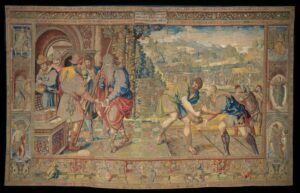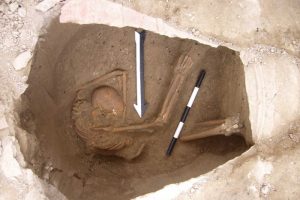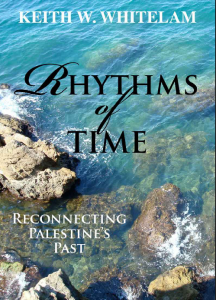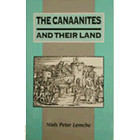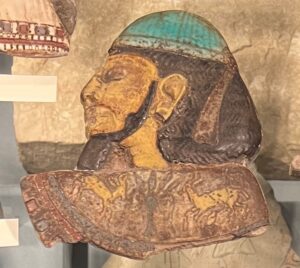
In the first five books of the Bible there are four different ways God promises to give the land of Canaan to the Israelites. [I continue to write from the perspective argued by many scholars that the Bible’s narratives had multiple authors and that their respective stories did not always agree. In this post I make mention of conventional sources behind the biblical books (J, E, D…) but I do so mainly for convenience. I am aware that some scholarship has questioned the existence of these sources but my point here is that there are evidently different points of view being expressed in the Bible, however we might conceptualize them.]
Inheriting the land through natural population growth
In Genesis God promises Abraham that his descendants through Isaac will inherit the land and be a blessing to all nations roundabout. Genesis 12:2-3
I will make you into a great nation, and I will bless you; I will make your name great, and you will be a blessing. I will bless those who bless you,and whoever curses you I will curse; and all peoples on earth will be blessed through you.
In the previous post we saw that ….
The patriarchs served for the writers and editors of Genesis as models of tolerance and coexistence with at least some segments of the native population. (Frankel, p. 325)
For the Genesis authors and editors,
The promise of the land was thought of in terms of hegemony over peoples who would derive blessing from Israel’s dominance, not in terms of eradicating all that is foreign. Only the “enemies” who cursed the descendants of Abraham would be cursed. (ibid.)
When Jacob was passing on future blessings to his sons he condemned the violence of Simeon and Levi in destroying the Canaanite city of Shechem. Genesis 49:5-7
Simeon and Levi are brothers —their swords are weapons of violence. Let me not enter their council, let me not join their assembly, for they have killed men in their anger and hamstrung oxen as they pleased. Cursed be their anger, so fierce, and their fury, so cruel! I will scatter them in Jacob and disperse them in Israel.
While Judah is honoured for taking tribute from his enemies (Gen 49:8-10) and the descendants generally will “possess the gate of their enemies” (Gen 22:17),
There is no basis . . . for understanding these blessings as indicating that all the inhabitants of the land are destined for expulsion or destruction, as implied both in Deuteronomy’s re-use of the patriarchal promise motif and in the pentateuchal conquest laws. Rather, the military aspect is included as an additional element in the achievement of dominion in the land. The blessing of proliferation goes hand in hand with overall dominion and control in the land, not with destruction of all that is “other.” The blessing to mankind of great proliferation is analogously combined with dominion over creation, not with its destruction (Gen 1:28; 9:1–7 116 ). The very fact that the seed of Abraham will possess the gate of their enemies rather than the inhabitants of the land indicates that not all the inhabitants of the land will be “possessed” as enemies. Some inhabitants, rather, will be taken on as allies, or covenant partners in one sense or another . . . . (Frankel, 312)
I’m not saying that the Canaanites and Israelites will be equal partners in this scenario. It is an “idealistic” scenario for the twelve tribes insofar as the Canaanites in the land will honour and submit to them while receiving the blessings God promised through his people. So theoretically everybody knows their place in relation to one another and all are being blessed accordingly.
Clearly, the text speaks of supremacy in the land and not total displacement of all inhabitants. Here too, those who bless Jacob and accept his dominance will be blessed. (Frankel, 313)
Genesis as an outlier
Genesis is not like the other books in the Pentateuch, however. Unlike those other books (Exodus to Deuteronomy) Genesis is about “the establishment of the permanent order of the cosmos and the relationships among [peoples]”. Unlike in other books, God in Genesis appears as a man, face to face, walking with humans, talking with them mostly in the broad daylight, without need of an intermediary prophet. The customs we encounter in the narratives of Genesis are unique: e.g. Genesis is not at all embarrassed in the way it depicts Rachel stealing Laban’s idols or in Joseph and Jacob being embalmed as per the Egyptian Osiris cult.
Nor does Genesis allude in any way to Israel’s unique religious status. Abraham is a God-fearing, just man; but neither in the promises made to him nor in those made to his descendants is the distinction of possessing YHWH’s Torah, or the fact that Ishmael and Esau will be idolaters mentioned. The religious rift that separates Israel from the nations, so prominent in the rest of the books of the Torah, is never hinted at in Genesis. Here, Israel’s distinction is purely one of lineage; it is “lord over its brethren” (27:29). True, there is a covenant between God and Israel’s ancestors; but its promises are purely ethnic: numerous progeny, territorial possessions, and kingship. (Kaufmann, 207)
The story we read in Exodus has only the slimmest connections with the central narratives about the patriarchs in Genesis.
[T]here is no reference at all to the constantly repeated promise of increase addressed to the fathers, of which the author is obviously not aware. The situation is even more striking with the first mention of the land into which it has been proclaimed, the Israelites are to journey after they have been rescued from slavery in Egypt. The text reads: ‘I will lead you into a good, broad land, into a land that flows with milk and honey, the home of the Canaanites, the Hittites, the Amorites, the Perizzites, the Hivites, and the Jebusites’ (3.8). The land is introduced here as an unknown land, and more, as a land that is the home of foreign nations; there is not a word which mentions that the patriarchs have already lived a long time in this land and that God has promised it to them and their descendants as a permanent possession. Following the terminology of the promise of the land in Genesis, those addressed here would be the ‘seed’ for whom the promise holds good. But they are not spoken to as such. (Rendtorff, 84f)
One may surely conclude that the authors behind this work were unaware of what others were writing/would write about Moses and Mount Sinai and Joshua’s conquests. (The passage in Genesis 15:13-16 prophesying of the Exodus reads most oddly out of place: it does not relate to the question Abraham has asked and that God is setting up to respond to. Many scholars see this passage as a late addition. Rendtorff’s observation (85): “This text stands in splendid isolation within the patriarchal story“.)
 God will drive them out before/as the Israelites arrive
God will drive them out before/as the Israelites arrive
Exodus 34:11
Then the Lord said: . . . I am about to drive out before you the Amorites, the Canaanites, the Hittites, the Perizzites, the Hivites, and the Jebusites.
Presumably the God imagines the Israelites crossing into the land before the native inhabitants have all fled so he goes on to warn his people not to make any covenants with them and to destroy all their cult statues. (This passage is said by many scholars to belong to the “J source” of the Pentateuch.)
Another passage, one scholars attribute to the “E source” within the Pentateuch:
Exodus 23:27-30
I will send my terror ahead of you and throw into confusion every nation you encounter. I will make all your enemies turn their backs and run. I will send the hornet ahead of you to drive the Hivites, Canaanites and Hittites out of your way. But I will not drive them out in a single year, because the land would become desolate and the wild animals too numerous for you. Little by little I will drive them out before you, until you have increased enough to take possession of the land.
So here it is God who removes the Canaanites:
The pre-Deuteronomic tradition speaks almost exclusively of the expectation that the displacement of the Canaanites would be accomplished by God. . . . The expulsion, J believed, was to have been carried out by Yhwh. . . . J imagined the promise to have been one of miraculous expulsion of the Canaanites; Israel’s only task was not to get in the way. . . .
. . . Yet in E, as in J, the actual expulsion of the existing population was to be carried out by God. In contrast to J, however, E speaks of a prediction that it would be done in stages. (Schwartz, 157)
God commands the Israelites to slaughter them all
Now we come to a strikingly different source, one that scholars call “D”. Here we find no compassion, no mercy, towards the Canaanites. The descendants of the patriarchs are expected to bloody their own hands
Deuteronomy 7:16
You must destroy all the peoples the Lord your God gives over to you. Do not look on them with pity and do not serve their gods, for that will be a snare to you.
Deuteronomy 20:16-17
However, in the cities of the nations the Lord your God is giving you as an inheritance, do not leave alive anything that breathes. Completely destroy them — the Hittites, Amorites, Canaanites, Perizzites, Hivites and Jebusites — as the Lord your God has commanded you.
The Land itself will “vomit” them out
Leviticus 18:25-28
Even the land was defiled; so I punished it for its sin, and the land vomited out its inhabitants. But you must keep my decrees and my laws. The native-born and the foreigners residing among you must not do any of these detestable things, for all these things were done by the people who lived in the land before you, and the land became defiled. And if you defile the land, it will vomit you out as it vomited out the nations that were before you.
Leviticus 20:22-24
Keep all my decrees and laws and follow them, so that the land where I am bringing you to live may not vomit you out. You must not live according to the customs of the nations I am going to drive out before you. Because they did all these things, I abhorred them. But I said to you, You will possess their land; I will give it to you as an inheritance, a land flowing with milk and honey.
Here the land God is handing over to the Israelites is “a land flowing with milk and honey”. But if the people sin that land will “vomit them out”.
The land of Canaan, in H’s view [H is another source discerned by scholars, alongside J, E, D above], is a fertile and bountiful land unless it is contaminated by human transgression. When that occurs, its skies withhold their rainfall, desert winds wither its grain, armies of locusts descend upon it, its trees and fields fail to yield their produce, pestilence breaks out, and wild beasts roam the countryside—and its inhabitants, impoverished and plagued by hunger and thirst, must leave in search of greener pastures. (Schwartz, 166)
As Baruch Schwatz views these two passages in Leviticus, the author is imagining that the Canaanites will already have been driven out of the land because of their sins, and that the land will be punished with drought and crop failure by the time the Israelites arrive. The Israelites will therefore enter a land of milk and honey. But they must beware lest they also commit the same sins as the former inhabitants and the abundant land turns once again to desolation and in turn drives them out.
Conclusion
There are many voices in the Bible. The traditional Documentary Hypothesis has worked with the view that these different voices emerged over many generations and at some stage a group of editors sought to combine them in a single narrative or collection of books with an overall narrative. Once that combined work was finished, later editors with new ideas undertook to revise that narrative even more with further additions. Hence we have a work riddled with inconsistencies, contradictions, unfinished or obscure details, and so forth.
More recently some scholars have questioned aspects of the above model. Would not later editors with new ideas seek to eliminate accounts that they strongly disagreed with and produce a more coherent work? After all, that’s what the authors of 1-2 Chronicles did when they rewrote the history of the kings of Israel and Judah. Some scholars have suggested that a better explanation is that editors were attempting to combine into a single narrative multiple viewpoints of different interest groups. The technical terms are that a “synchronic” model of composition (stitching together multiple narratives from different ideological quarters, Levitical and Aaronide, Jerusalem and Samaria, etc) as opposed to the conventional “diachronic” (or multi-generational) model.
Baruch Schwartz has tackled this question in detail and in one of his areas of inquiry, the story of Joseph (Genesis 37) as a linking narrative designed to join the book of Genesis with that of Exodus, concludes in relation to that particular story (my bolded highlighting):
Our analysis demonstrates, first and foremost, that the process of composition of Gen 37 was essentially a canonical one, aimed at collecting, collating and preserving literary works already in existence. The outcome of the compilation process was determined — to the letter — by the pre-existing sources themselves. These were received by the compiler in the form of fully shaped, continuous and internally consistent written narratives, and the compiler viewed them as possessing a measure of sanctity that rendered it desirable, indeed obligatory, to refrain as much as possible from altering, detracting from or adding to them.
Genesis 37 in its canonical form shows no signs of being the result of creative narrative art, nor does it appear to be the work of ideologically or theologically motivated redactors who, having selected freely those sources and traditions that were best suited to their purposes, molded them into a new whole precisely as they wished. The compiler of Gen 37 had no say in determining either its content or its form; he was responsible neither for its themes and motifs nor for its religious teachings; he was not even at liberty to decide what to include and what to exclude. All of these aspects of literary license and creativity belong to the earlier stages in the formation of the Torah. . . .
The analysis of Gen 37 reveals further that no single source served as the underlying text to which the compiler added what he deemed appropriate from the other documents. The compiler did not use E as his Vorlage, adding to it whatever portions of J and P he felt that he needed, nor did he use J as his primary text, adding to it whatever he chose from E and P. He did not stratify, superimposing portions of a later document upon an earlier one or portions of an earlier one upon a later one. The unmistakable impression one receives is that the compiler attached equal weight to the two narratives — as well as to the opening segment from P, which he placed precisely where he was obligated to place it — and so he combined them by alternating between them, adhering meticulously to the principles of composition we have identified: maximal preservation of each source, strict chronological progression, avoidance of addition and deletion and continuing the thread of each narrative as long as possible, moving to the other thread at exactly the point when it becomes necessary to do so, not a single word earlier or later.
Finally and most crucially, our analysis reveals that the result arrived at by the compiler, the composite chapter in its canonical form, is, given the method that he evidently employed, the only possible result that could have been obtained. The final form of the chapter is not a function of the compiler’s ideological agenda, theological tendencies, aesthetic tastes, or artistic abilities. His role was confined entirely to the painstaking arrangement of the existing texts in combined form. The case of Gen 37 is in no way atypical; the composite narratives throughout the remainder of the Pentateuch all yield similar results.
Russell Gmirkin’s studies have placed both the disparate sources and the final compiler of those sources into the result we see today in the Hellenistic time-setting (see Plato and the Hebrew Bible and Plato and the Biblical Creation Accounts). Baruch Schwartz, from my understanding of his works, would place those sources much earlier. I may favour the Gmirkin’s Hellenistic provenance, but the account of how we arrive at such a final text (bound by a single narrative yet riddled with inconsistencies) as outlined above by Schwartz makes a lot of sense to me.
Frankel, David. The Land of Canaan and the Destiny of Israel: Theologies of Territory in the Hebrew Bible. Winona Lake, Ind: Eisenbrauns, 2011.
Kaufmann, Yeḥezkel. The Religion of Israel: From Its Beginnings to the Babylonian Exile. Translated and abridged by Moshe Greenberg. New York: Schocken Books, 1972.
Rendtorff, Rolf. The Problem of the Process of Transmission in the Pentateuch. London; Gordonsville: Sheffield Academic Press, 2009.
Schwartz, Baruch J. “Reexamining the Fate of the ‘Canaanites’ in the Torah Traditions.” In Sefer Moshe: The Moshe Weinfeld Jubilee Volume : Studies in the Bible and the Ancient Near East, Qumran, and Post-Biblical Judaism, edited by Chaim Cohen, Avi Hurvitz, and Shalom M. Paul, 151–70. Winona Lake, Ind: Eisenbrauns, 2004. https://www.academia.edu/39296080/Reexamining_the_Fate_of_the_Canaanites_in_the_Torah_Traditionshttps://www.academia.edu/39296080/Reexamining_the_Fate_of_the_Canaanites_in_the_Torah_Traditions

